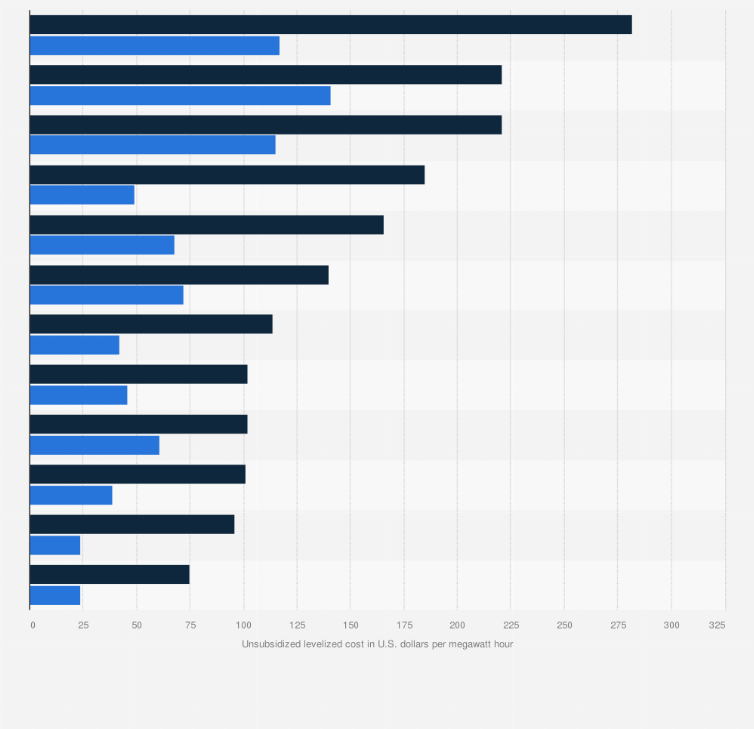Levelized cost of energy in the U.S. 2024, by source
Rooftop solar photovoltaic installations on residential buildings and nuclear power have the highest unsubsidized levelized costs of energy generation in the United States. If it wasn't for federal and state subsidies, rooftop solar PV would come with a price tag between 122 and 284 U.S. dollars per megawatt-hour. Rooftop installations have a higher levelized cost range due to their relatively small capacity when compared with utility-scale power plant facilities.
LCOE for solar PV
Levelized cost of electricity or energy generation (LCOE) is a measure used to compare cost efficiency of different electricity generating technologies. It describes the average expense of building and maintaining a power plant divided by its total power output over the facility’s lifetime. The global levelized cost of electricity for solar PV averaged 0.04 U.S. dollars per kilowatt-hour in 2023. The economic viability of solar PV installations is dependent on a variety of factors largely centering around topography and the predominant weather pattern at the installation site. In regions with high sunshine duration, installing solar PV would come with lower LCOE’s as electricity production may be higher. As countries may stretch across highly variable topography and even across climate zones, solar PV LCOE may also vary greatly within a country. The U.S. has some of the lowest LCOE’s for utility-scale solar PV.
Capital costs by energy technology
In terms of capital costs – the one-time expense arising from the purchase of land, construction material, and building of the power plant for new power plants expected to come live in 2028, offshore wind power is the most expensive in the United States. It had an estimated levelized capital costs of roughly 89.6 U.S. dollars per megawatt-hour as of March 2023. Capital costs for solar PV are comparatively low.













